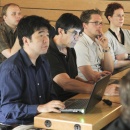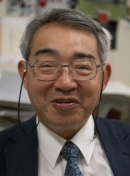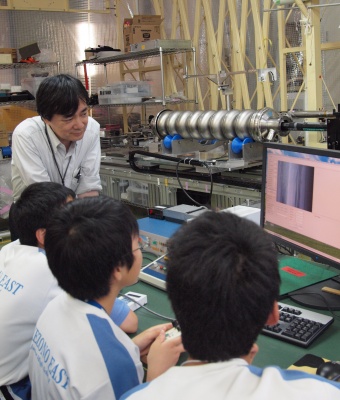Image of the week
Young scientists at KEKJunior high school students in the Tsukuba area visited KEK for their school’s job experience programme. Here they use a Kyoto camera to look for defects on the inside of an accelerating cavity. |
In the News
-
from The Economist24 June 2011MINOS beams muon-neutrinos from Fermilab, America’s biggest particle-physics lab located near Chicago, to a 5,000-tonne detector sitting in the Soudan mine in Minnesota, 735km (450 miles) to the north-west. On June 24th its researchers announced that they, too, had witnessed some of muon-neutrinos change to the electron variety along the way.
-
from Science23 June 2011Physics fans, hold your breath: An underground lab that’s absolutely vital to the future of particle physics in the United States will cost the Department of Energy (DOE) between $1.2 billion and $2.2 billion, according to a study presented today to the federal High Energy Physics Advisory Panel (HEPAP).
-
from EuCARDApril – June 2011As accelerators are becoming more powerful the potential radiation damage to the components increases. Accelerator beams of the past have not contained enough energy to do the damage which beams in the future upgrades of the LHC and other future accelerator projects will be able to do
-
from EuCARDApril – June 2011Pb has a quantum efficiency ten times greater than that of Nb, the more traditional SC photocathode material. It is therefore possible to produce a beam with higher brightness and average current than with Nb.
Copyright © 2025 ILC International Development Team




